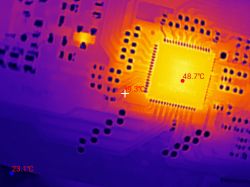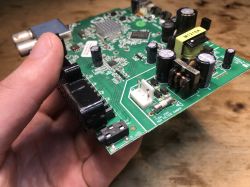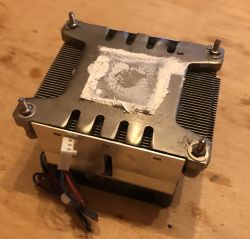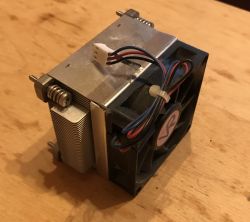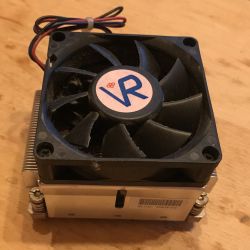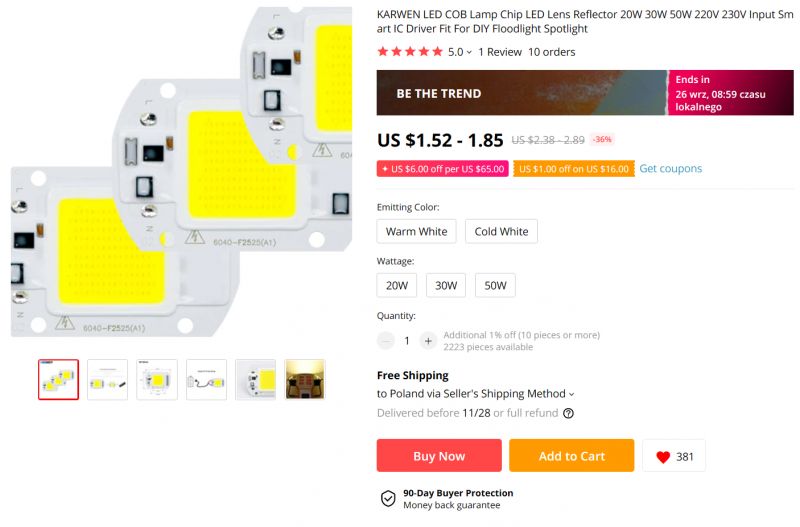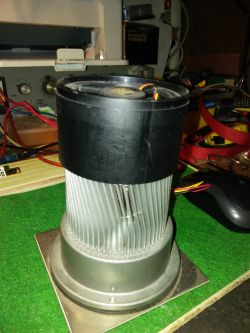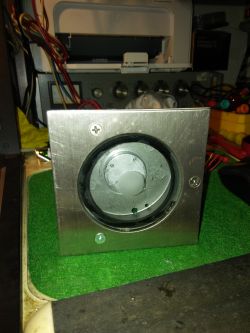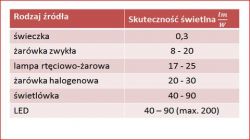
Recently, I found an offer to sell a COB LED module with a power of 50W. I decided to check whether the given parameters really correspond to reality - below I put the results of my test.
50W COB LED module purchase
I found the diode on eBay under the slogan 50W LED Chip COB 30V-36V Cool white Integrated Bright Bulb beads for Floodlight for less than 2 euro:
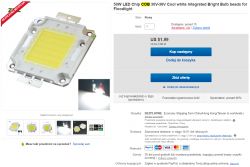
The seller is of course from China.
COB in its name is an abbreviation of "Chip on board", which means that this module is a few or more LEDs in one housing as a single module.
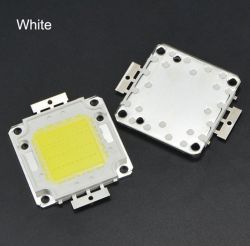
The module has the following dimensions:
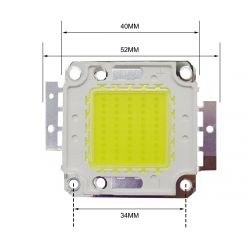
The seller provides the following parameters:
Quote:Power: 50W
Working voltage: 30-36V
Current: 1500mA +- 5%
Brightness: 4700LM
Dimensions: 52mmX40mm
Knowing the aspirations of some sellers to overestimate the parameters of their products, I decided to see if this diode actually reaches 50W - the results below.
Test environment (TP-1603 power supply)
Good cooling is necessary for such an LED module - even if we want to run it only for a moment. It shouldn't be turned on without a heat sink at all.
For this reason, I also chose one of the larger heat sinks I had at hand and drilled four holes in it for mounting the module (although this heat sink should be much bigger , especially for continuous operation):
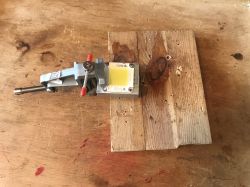

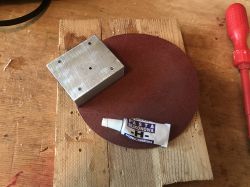
I used thermal paste to improve the contact between the LED and the heat sink.
Of course, this module is powered by direct current. The poles of the module are marked on its housing - just take a look. I soldered wires of the appropriate colors to the leads:
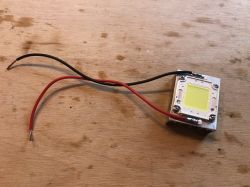
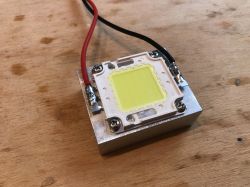
I used the TP-1603 laboratory power supply to power the diode. It offers voltage and current regulation in the range of 0-60V and 0-3A. Additionally (in order to verify the measurements) I used a UT210E clamp meter and a BM857s multimeter to measure the voltage:
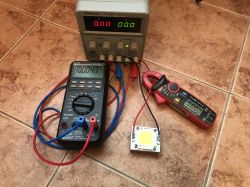
Voltage / current measurement results
Such LEDs should be energized current source , that is, constant current, not voltage. This is because the voltage drop across a diode changes with its temperature, which if powered from a voltage source would result in a change in current as it heats up, which could eventually burn it.
That's why I used my power supply as a current source.
I gradually increased the diode current. The diode started to glow slightly at 0.01A current and 25.5V voltage.
I quickly realized that this LED was REALLY BRIGHT. Even at lower tensions, a brief glance at it makes us see a 'trace' of its brightness in front of our eyes. I advise against anyone irresponsible experiments with such strong light sources, you can damage your eyesight.
I allowed myself to pull the test up to 2A with the full awareness that it might end up damaging the module.
Between subsequent tests, I took breaks so that the heat sink could cool down.
Below are photos of measurements:

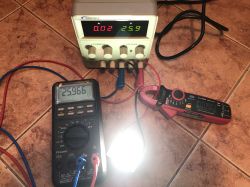
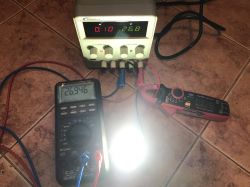
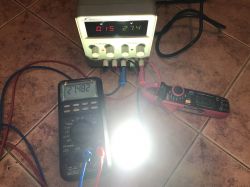
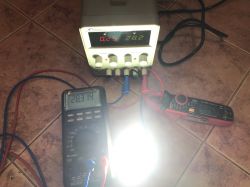
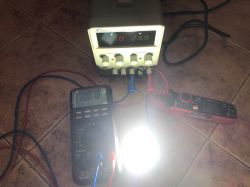
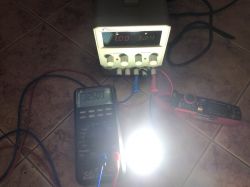
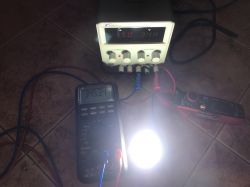
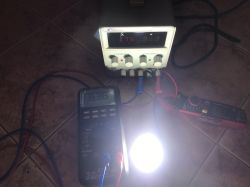
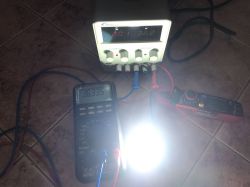
I gave the measurement results to the table:
| Current [A] | Voltage [V] | Power [W] |
| 0.01 | 25.5 | 0.255 |
| 0.02 | 25.9 | 0.518 |
| 004 | 26.2 | 1.048 |
| 0.1 | 26.8 | 2.68 |
| 0.15 | 27.4 | 4.11 |
| 0.25 | 28.2 | 7.05 |
| 0.5 | 29.9 | 14.95 |
| 1 | 32.4 | 32.4 |
| 1.5 | 34.4 | 51.6 |
| 1.75 | 35.3 | 61.775 |
| 2 | 36.2 | 72.4 |
Of course, if you observe the diode for longer, you can see that the voltage at a given constant current value changes - this is what I mentioned earlier, the voltage drop of the diode changes as it heats up.
The diode actually reaches 50W with a current of about 1500mA, although of course some of this is deposited as heat and not light.
My little heat sink works well only up to 500mA (less than 15W power). Probably a cooler from an old desktop computer would work better here - you can get it occasionally from electronic scrap.
Summary
This LED module actually has a power of 50W as stated by the seller. It is really very bright - much brighter than the bulbs we usually meet. Inherently, it also heats up quite a bit and requires a large heat sink (probably larger than the one I used for the quick measurements).
Now you could think about using such an LED module - do you have any ideas? Maybe a portable flashlight?
Cool? Ranking DIY Helpful post? Buy me a coffee.



